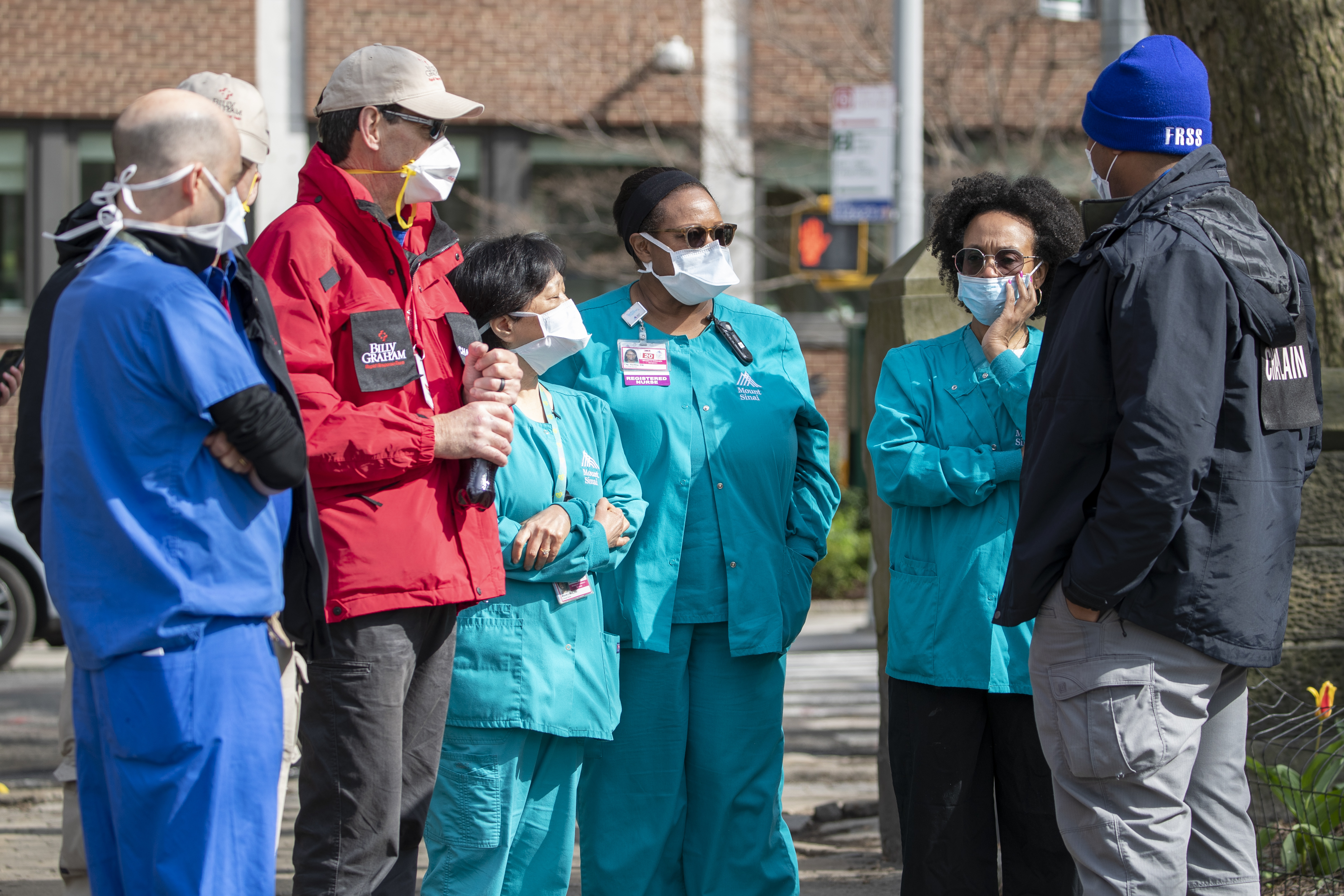At the end of February, Dr Ryan Padgett’s colleagues in the emergency room called him over to share some news: A patient who had died the previous day had tested positive for the coronavirus — the first known de ath in the US.
Everything, they knew, was about to change. Over the next several days, a parade of patients from a nearby nursing home was brought into the emergency room at EvergreenHealth in Kirkland, Washington, which emerged as the first centre of the nation’s coronavirus outbreak.
The patients were in dire condition, struggling for air. But most of them were old, and some were already sick. Dr Padgett did not worry much for himself. The 45-year-old physician kept in shape with gym visits and skiing trips.
Back in college at Northwestern, he had been an All-Big Ten offensive guard, helping lead the team to the Rose Bowl after the 1995 season. In 21 years on the job, almost all at EvergreenHealth, he said he had taken only five sick days.
Then one day in early March, he felt a headache coming on, which was unusual for him. His muscles were sore. By March 9, he had a fever and a cough. Two days later, his breathing was so laboured that he realised he was going to become a patient in his own hospital.
“Either this thing is a beast or I’m just not used to being sick,” he texted a friend. “My Ironman immune system failed me.”
Dr Padgett was one of the first two emergency room physicians in the country to be hospitalised in intensive care with the coronavirus. His case, which he shared publicly on Monday for the first time, offers a harrowing window into the risks faced by front-line medical workers and the devastating impacts that coronavirus can have on some people who are otherwise healthy.
For Dr Padgett, who hovered at one point near death in a medically induced coma, it took medical teams at two hospitals to bring him back from the brink.
Back at his home in Seattle, still weak from his three-week ordeal, Dr Padgett in a telephone interview described an illness that left him feeling as though he had, for the first time in his life, utterly lost control. Even before he learned he had the coronavirus, he said, he knew this was no ordinary case of the flu.
“You can’t lay flat, or you start gasping for air,” he said. “A couple of steps forward and all of a sudden it’s like you just ran three miles, which is pretty rare. I’m in pretty good shape. You knew something was up. You knew something was different.”
The turnaround time for a coronavirus test at the time was at least several days. Assuming that he had the illness, Dr Padgett stayed home with an oxygen monitor.
Even as his condition continued to worsen, Dr Padgett said he was in a bit of denial, assuming that things would be fine.
His fiancée, whom he was set to marry in May, questioned him after his oxygen levels began dropping well below normal levels. He responded by saying that maybe the oxygen monitor, not as good as the ones in the hospital, was faulty.
“She looks me in the eye and she said, ‘OK, I’m going to get ready to go to the hospital. We’re going to take one more measurement, and if it’s too low, we’re going,’” he said.
Within hours, Dr Padgett was on a ventilator.
His colleagues at the hospital put him on the anti-malarial drug hydroxychloroquine, whose effectiveness for the coronavirus is still unknown, but Dr Padgett’s condition continued to worsen.
By March 16, his heart was struggling, his kidneys were failing and his lungs were not providing enough oxygen to his body. The levels became so dire that he was on the verge of injuring his brain through oxygen starvation.
Dr Padgett’s team at EvergreenHealth decided to transfer him to cardiac specialists at Swedish Health Services in Seattle. Dr Matt Hartman, a cardiologist there, said it was clear that Dr Padgett’s condition was rapidly worsening and that if they did not do something, he would not survive.
“We didn’t know if this was someone who was just going to die no matter what we do,” he said. “We think with his age, and the fact that there’s no other major comorbidity or problem, that we should at least give it a try.”
The team decided to hook Dr Padgett up to a machine known as an ECMO that could essentially serve as both an artificial heart and lung, taking his blood out of his body, oxygenating it and returning it to him. While such procedures are most often done in the surgery suites, in this case it was all done in the intensive care unit, to prevent the spread of the coronavirus elsewhere in the hospital.
“We brought the operating room to him,” said Dr Samuel Youssef, a cardiac surgeon at Swedish.
The team also began consulting with oncologists. Indicators of inflammation in Dr Padgett’s body were “astonishingly high”, suggesting that he was potentially dealing with a “cytokine storm”, a dangerous phenomenon in which the immune systems of otherwise healthy people overreact in fighting the coronavirus.
The doctors administered the drug tocilizumab, often used for cancer patients who can have similar immune system reactions. They added high-dose vitamin C after seeing reports that it might be beneficial. These experimental treatments had also been tried on another patient, a 33-year-old woman, with some success.
Over that week in mid-March, there were signs of improvement. As his inflammation numbers came down and his lungs started to provide more oxygen, the team began scaling back the ECMO machine, until they finally removed it on March 23.











